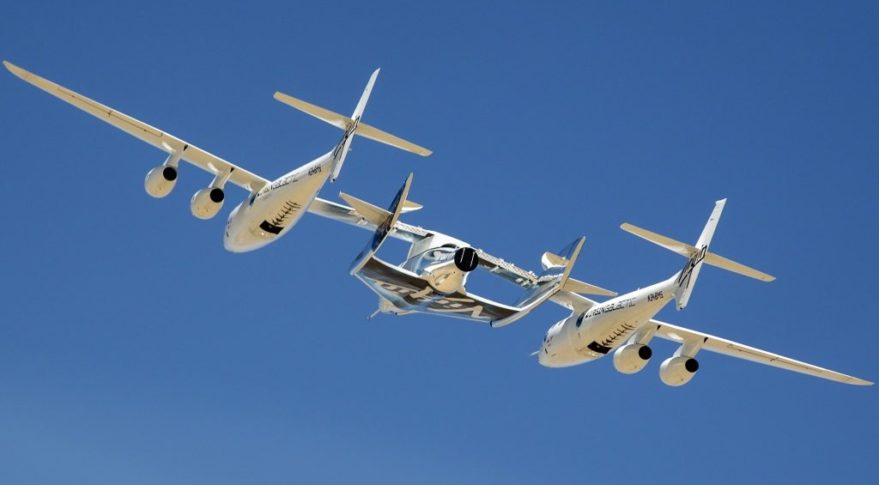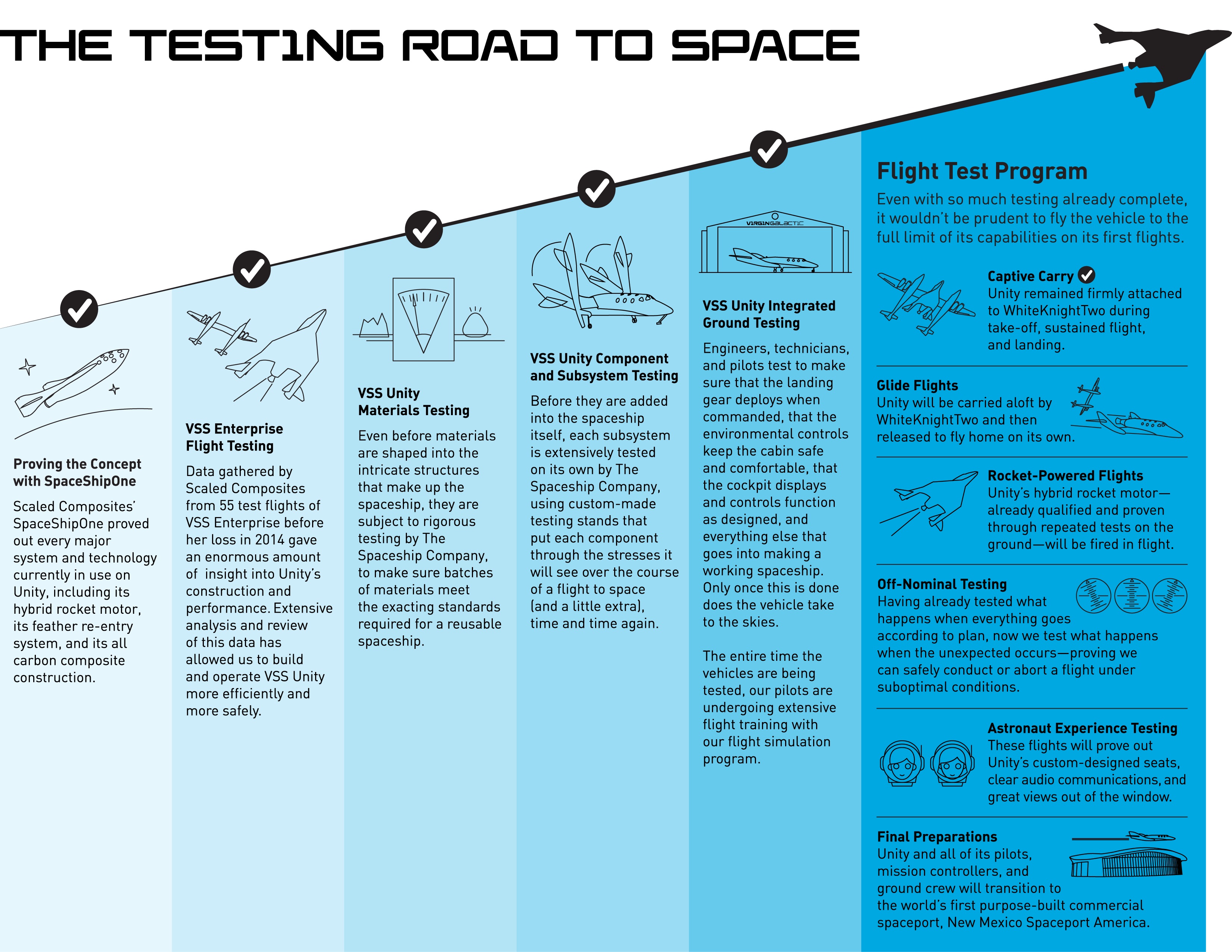Virgin Galactic Postpones 1st Glide Test with New SpaceShipTwo

Update: Virgin Galactic has postponed the glide test portion of today's flight due to strong winds. The VSS Unity has landed safely, and the company plans to announce a new test date soon.
The space tourism company Virgin Galactic took to the air with its VSS Unity space plane today (Nov. 1) to attempt the craft's first glide flight.
Virgin Galactic representatives announced the test this morning. If weather permits, the SpaceShipTwo VSS Unity will be carried to drop altitude by its mothership, called the VMS EVE, and then released so that it can glide back to Earth and make a runway landing at the Mojave Air and Space Port in California. The VMS Eve took off at about 10:35 a.m. EDT (7:35 a.m. PDT/1435 GMT) from the Mojave spaceport.
Today's test flight will not go into space, but it is a major step in Virgin Galactic's flight test program to resume rocket-powered flights. Virgin Galactic has not performed a free-flight test of a SpaceShipTwo since its first vehicle, the VSS Enterprise broke apart during a powered test flight on Oct. 31, 2014, killing a co-pilot and injuring its pilot.

In September, Virgin Galactic performed the first captive-carry test flight of VSS Unity attached to its mothership. That flight set the stage for today's drop test, company representatives said.
"Our first glide flight will be focused on testing the fundamental performance and handling qualities of VSS Unity," Virgin Galactic representatives wrote in a statement. "For this first test, we will keep the vehicle at a light weight and will place a 'speed limit' on the pilots (Mach 0.6). Once we analyze the results from this test, we will be cleared to go faster on subsequent tests."
The test is also weather dependent. It's possible that Virgin Galactic may call of the drop if weather conditions prove uncertain.
Get the Space.com Newsletter
Breaking space news, the latest updates on rocket launches, skywatching events and more!
Virgin Galactic's SpaceShipTwo is a two-pilot, six-passenger spacecraft designed to carry space tourists on roundtrips to suborbital space. The spacecraft is designed to be carried up to a high altitude by its carrier craft VMS Eve and then be released so it can ignite a rocket motor and launch into space. The spacecraft won't reach orbit, but will provide passengers several minutes of weightless and views of Earth from space via its many windows. Virgin Galactic is selling tickets for the experience at $250,000 per seat.
Email Tariq Malik at tmalik@space.com or follow him @tariqjmalik and Google+. Follow us @Spacedotcom, Facebook and Google+. Original article on Space.com.
Join our Space Forums to keep talking space on the latest missions, night sky and more! And if you have a news tip, correction or comment, let us know at: community@space.com.

Tariq is the Editor-in-Chief of Space.com and joined the team in 2001, first as an intern and staff writer, and later as an editor. He covers human spaceflight, exploration and space science, as well as skywatching and entertainment. He became Space.com's Managing Editor in 2009 and Editor-in-Chief in 2019. Before joining Space.com, Tariq was a staff reporter for The Los Angeles Times covering education and city beats in La Habra, Fullerton and Huntington Beach. In October 2022, Tariq received the Harry Kolcum Award for excellence in space reporting from the National Space Club Florida Committee. He is also an Eagle Scout (yes, he has the Space Exploration merit badge) and went to Space Camp four times as a kid and a fifth time as an adult. He has journalism degrees from the University of Southern California and New York University. You can find Tariq at Space.com and as the co-host to the This Week In Space podcast with space historian Rod Pyle on the TWiT network. To see his latest project, you can follow Tariq on Twitter @tariqjmalik.









